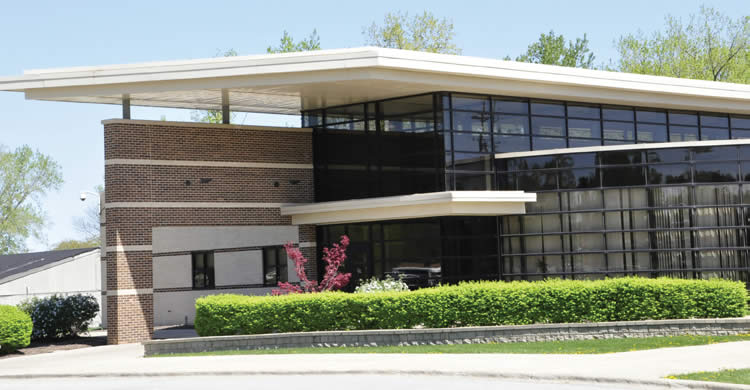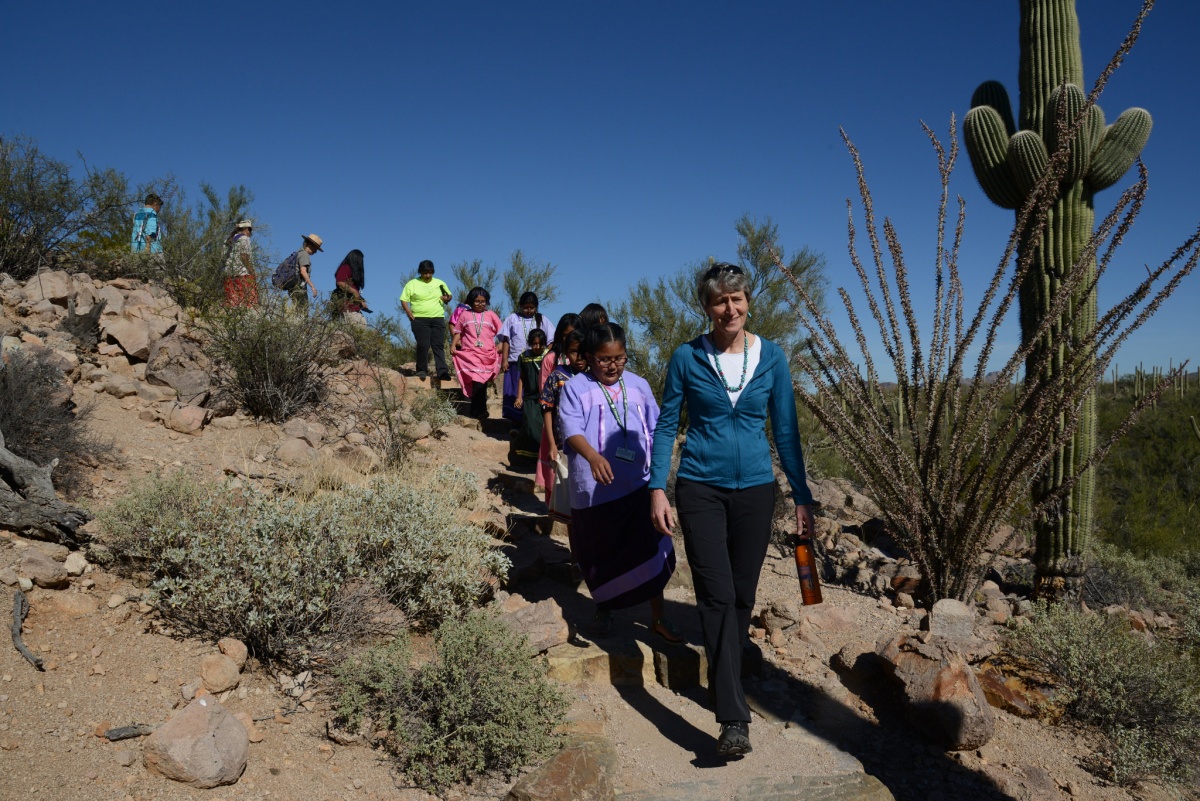
Secretary Jewell hiking on a field trip with Native American students to Saguaro Nation Park in Arizona. Photo by Tami Heilemann, Interior.
Washington, DC–(ENEWSPF)–September 27, 2016
By:Ann Marie Bledsoe Downes, Acting Director of the Bureau of Indian Education
Under President Obama’s Generation Indigenous initiative to break the cycle of poverty for Native youth, we are making substantial progress in carrying out sweeping educational reforms to ensure that students attending Bureau of Indian Education (BIE)-funded schools receive a world-class education that honors their cultures, languages and identities.
Developed through extensive consultation with tribal leaders our Blueprint for Reform is enabling the BIE to work with tribal communities to improve educational opportunities and outcomes by more effectively supporting tribal educators who best understand the unique needs of their communities. Successful implementation of the Blueprint continues with the support of the White House Council on Native American Affairs.
We are redesigning the BIE from a direct provider of education into an organization that promotes tribal self-governance and self-determination by supporting tribal control of BIE-funded schools and serving as capacity-builder and service-provider to those schools.
This transformation was sorely needed because the BIE operates only 52 of the 183 schools it funds. Tribal nations or local school boards have assumed direct management of 71 percent of these schools, and the number is likely to grow. The BIE’s mission and organization had not evolved to meet these new realities.
Today, however, in an Administration that respects tribal wisdom and sovereignty, our efforts are guided by strategic priorities that include promoting tribal self-determination; modernizing BIE’s administrative structure; and improving teacher recruitment retention and development.
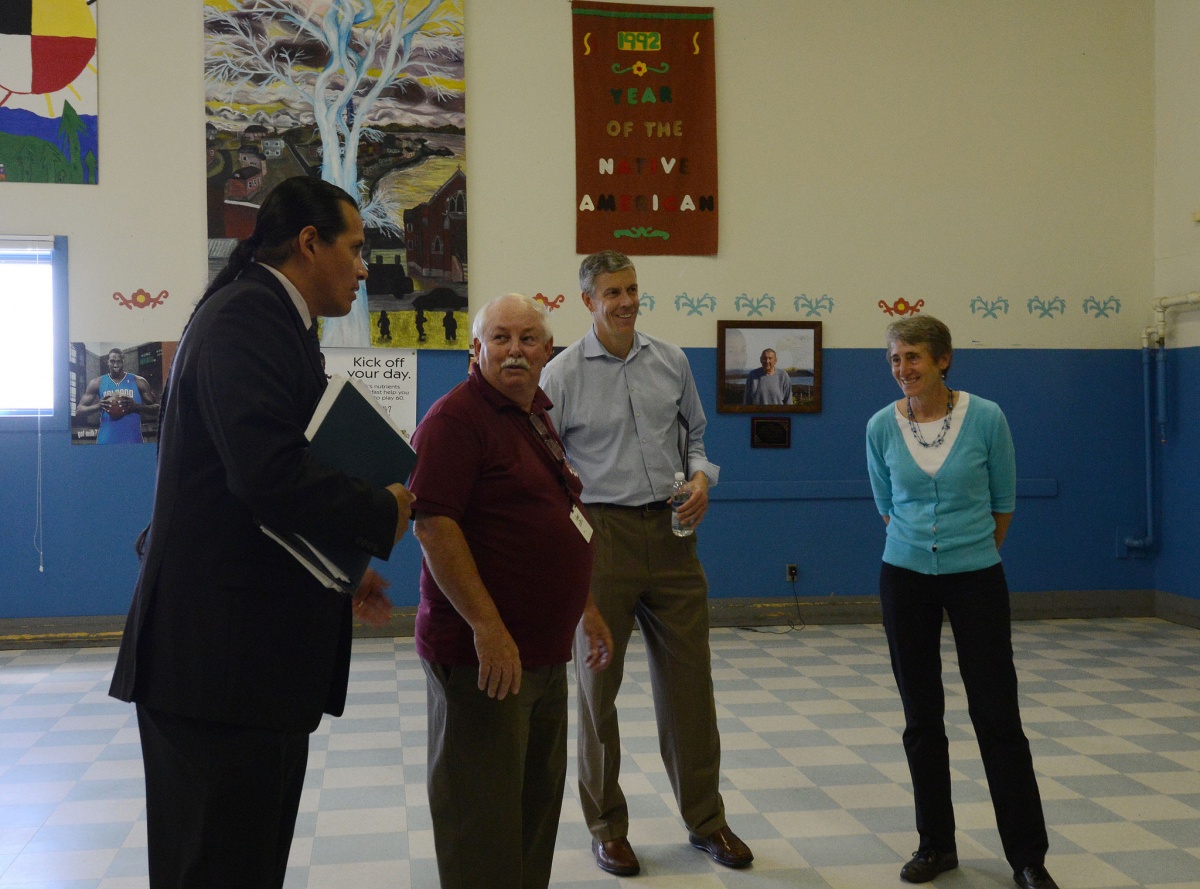
Secretary Jewell touring the Rafferty School in Perry, Maine. Photo by Tami Heilemann, Interior.
To highlight that progress, we have provided grants to tribal governments to support their educational self-determination initiatives, including developing alternative standards, assessments, and accountability systems, building the capacity of tribal education departments, and drafting tribal education codes. These grants are assisting more than half of all BIE-funded schools.
The Navajo Nation and Miccosukee Tribe were the first native communities to have their alternative standards, assessments, and accountability plans approved. This empowers the tribe to develop unified and rigorous academic standards, curricula and student assessments that reflect their communities’ cultural values. Their plans serve as models for other tribal governments, several of which are now looking to establish their own accountability systems with BIE support.
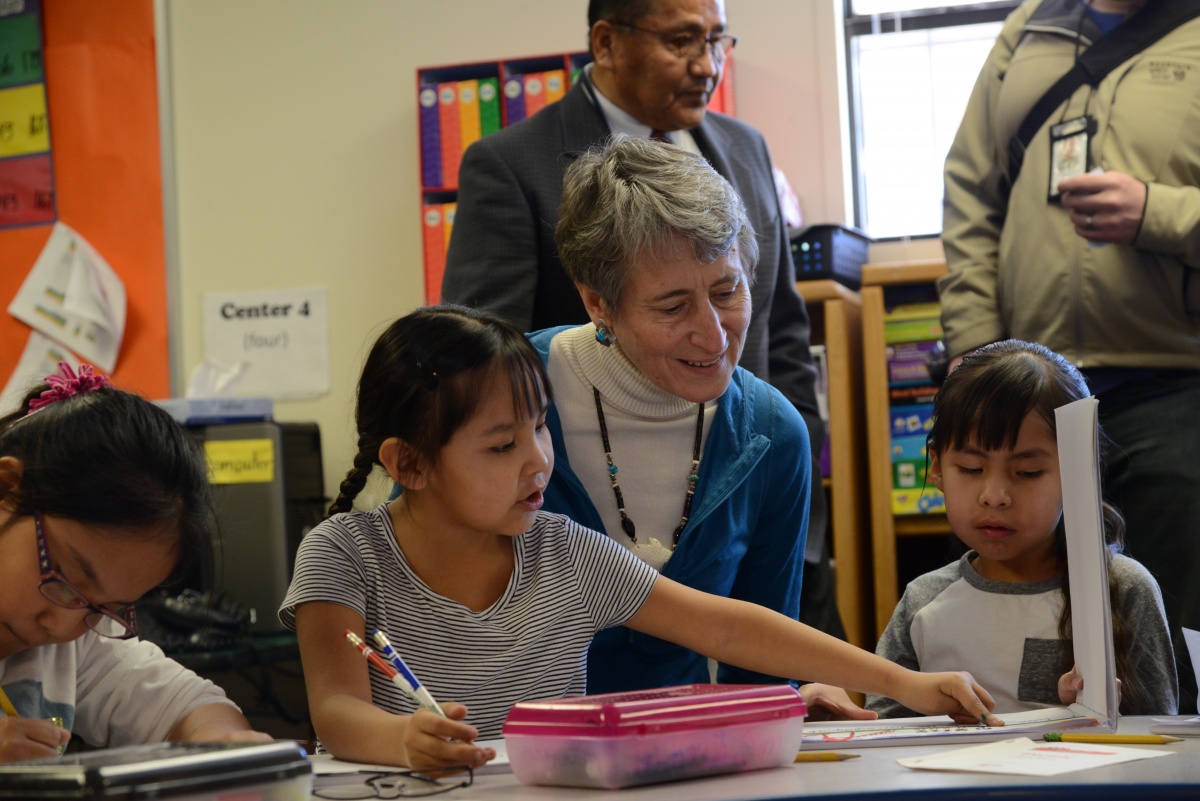
Secretary Jewell visits Cove Day School on the Navajo Reservation in Red Valley, Arizona. Photo by Tami Heliemann, Interior.
To restructure the BIE, we established three divisions to support our schools: the Bureau Operated Division assists schools directly run by BIE; the Tribally Controlled School Division supports schools operated under contracts by tribes; and the Navajo Schools Division supports schools in the Navajo Nation, whether bureau operated or tribally controlled. These divisions run Education Resource Centers that provide primary support to small groups of schools. The school solutions teams working out of these Educational Resource Centers deliver technical assistance to tribes and educators with a focus on improving outcomes for students.
We are also restructuring BIE’s School Operations Division to strengthen its capability to timely address school operating needs and improve the delivery of services in support of student achievement. Congress provided BIE an additional $2.5 million in the fiscal year 2016 budget to launch the realignment, enabling us to recruit for additional critical positions, including school safety specialists. The President’s proposed fiscal year 2017 budget requests an additional $8 million to complete the School Operations realignment.
The restructuring of the School Operations Division includes a proposal to move 22 Human Resources positions from the office of the Deputy Assistant Secretary-Indian Affairs (for Management) to the BIE to support teacher and principal hiring and retention. Because these efforts require a major reorientation in BIE’s organizational culture, we have engaged our employees through special convocations, called Students: Our Common Focus in the BIE, which will continue with a series of regional employee meetings this fall and additional follow up sessions in 2017.
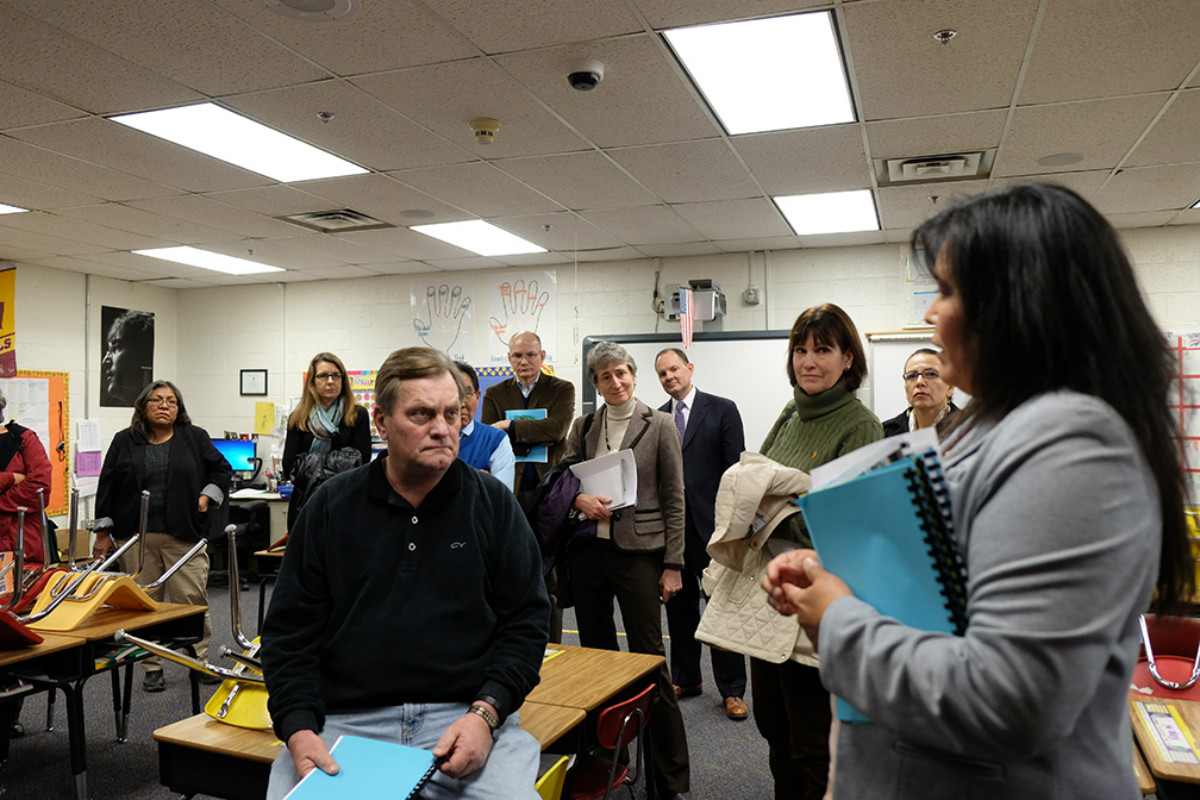
Secretary Jewell listening to educators at the Tuba City School in Arizona. Photo by Tami Heilemann, Interior.
To upgrade the skills of BIE educators, we have partnered with the National Board for Professional Teaching Standards – a preeminent professional development organization – to offer coursework leading to a nationally recognized teaching credential. About 440 BIE teachers have completed one or more course components, and we have launched an incentive program to recruit hundreds more who will begin the training this year.
The BIE also is developing culturally relevant instructional modules that will be shared among BIE educators. We are tapping the expertise of teachers who are recognized experts at reaching Native American students and making their techniques and curricula available for all our teachers, and even for educators outside the BIE’s schools.
In addition, the BIE will begin implementing its federally required Educator Equity Plan to learn from our most successful schools how to attract, develop and retain effective educators to work in our most rural and historically underperforming schools. And we are developing an internet-based system to streamline hiring and promote retention of high quality teachers and principals.
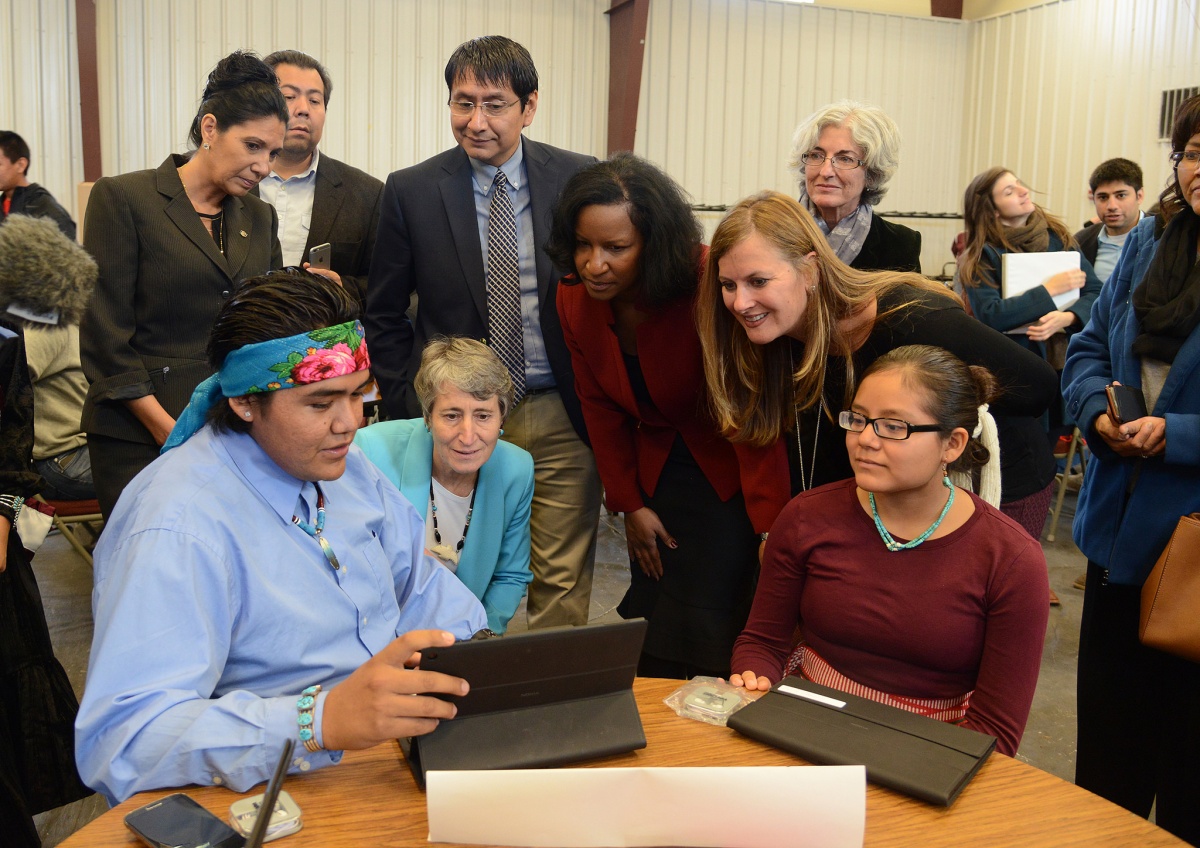
Secretary Jewell watches a Native American student demonstrate a computer program. Photo by Tami Heilemann, Interior.
Finally, much of our progress has been achieved through the help of a wide array of partnerships with national and regional stakeholder groups, reform-oriented education nonprofits and other agencies in the federal family, including the National Congress of American Indians, National Indian Education Association, the Council of Chief State School Officers and The New Teacher Project. Together, we are working closely with Native leaders, so that their communities will have more power to infuse their schools with tribal cultural values and native languages, both of which can better engage children and help them to succeed.
Source: http://doi.gov



